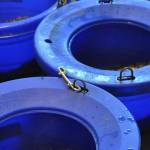Feeding Horses Electrolytes in Winter

Horse owners often associate electrolyte supplementation with warm weather. In actuality, provision of electrolytes depends entirely on the amount of work and sweat loss, and nothing whatsoever on season, so for certain horses supplementation is important every season.
“Horses lose electrolytes in sweat, so anytime a horse consistently works hard enough to generate even a slightly damp coat, an electrolyte should be added to the diet,” said Catherine Whitehouse, M.S., an equine nutritionist at Kentucky Equine Research (KER). “Horses that stay in sweat-producing work year-round should remain on a well-formulated electrolyte supplement every day.”
What constitutes an effective electrolyte supplement? One word: minerals. “The most effective electrolyte products contain sodium, chloride, potassium, magnesium, and calcium in levels that are comparable to losses,” she said. Feeding instructions on electrolyte products often contain an intake range based on workload and level of sweating. These ranges ensure adequate supplementation is provided.
First-time buyer? If you’re new to buying electrolytes, take a close look at the ingredients. “Electrolyte supplements that contain sugar, sometimes described as sucrose or dextrose, as a primary ingredient likely do not contain sufficient minerals to replace losses and should be avoided,” explained Whitehouse.
Equine electrolyte technology advanced recently with the introduction of a product that contains slow-release sodium. The product, called Restore SR, allows sodium to be released gradually into the gastrointestinal tract for sustained absorption. Feeding a concentrated electrolyte dose causes a surge in blood electrolyte levels, flushing out electrolytes just fed and shortchanging the horse of vital supplementation. When sodium is delivered slowly over a period of time, more is retained and utilized by the body. In Australia, a similar product is named Restore.
Occasionally, a horse will refuse an electrolyte in feed because of the saltiness, especially if it is not mixed thoroughly or if the horse does not receive much concentrate. For picky eaters, it is best to introduce the electrolytes slowly. A day’s worth of electrolyte can be divided between two or three meals.
Though many electrolyte products are powdered and therefore added directly to feed or water, many come as pastes, which typically match the powdered products in composition, assuming they are well-formulated, and are easy to administer. Electrolyte pastes sometimes contain buffers to diminish any gastric irritation the salts in the paste might cause. Restore Paste is available in the U.S. and Australia.
“Water should be offered frequently to any horse that has been given an electrolyte. If an electrolyte is to be given in a bucket of water, always provide a second bucket of water with no electrolyte added,” Whitehouse advised.








